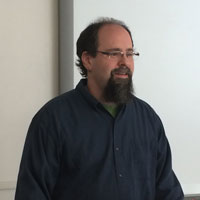
Teaching About the Politics of White Christianity at a State University
Every semester I stand in front of my classes at my predominantly white state university and argue, “whiteness came into being through more than five hundred years of dominant cultural narratives undergirded by [white] Christianity, laws, and sciences which have proclaimed the innate inferiority of those outside dominant white culture.” Historically my students have had three different responses to the argument: revelation, no surprise, and disdain. For the first group of students, the idea that white Christianity has anything to do with race and racism in the United States is new and revelatory. It helps them better understand how systemic violence came in to being and continues to function. For the second group of students, the idea that white Christianity is in part responsible for the state of race relations comes as no surprise and connects to their understanding of reality. Many of these students have a long view of history and many face the direct consequences of the systemic violence created by white supremacy, hetero-normativity, patriarchy, and ableism all of which have been justified by white Christianity. The third group of students respond with disbelief, anger, and disdain. This third group of students is more visible now than in previous years. As I look around the room there are clearly more eye rolls and head shakes, whispers, and general displays of dis-ease. The arguments about the politics of white Christianity are a direct affront to this group’s worldview and in some cases, the ideas are exactly what their families, community leaders, and political pundits warned them about.
What has become more evident in the last year is an increased level of anxiety in classroom spaces when talking about systemic violence and oppression. Part of the anxiety is about trauma and trust, while another part of the anxiety is about anger. The trauma was created by the presence of a presidential candidate on campus. It was an event that left students and faculty feeling wounded and vulnerable. Students stood on the opposite sides of the street with a police line between them. The experience has left people questioning who they can trust. It also exposed a lot of anger, much of which is fueled by hate. We are living in a time when overt verbal and physical attacks against black and brown bodies, against women’s bodies, against queer and trans bodies, and against non-Christian bodies are more overtly public, calculated, and politically normalized. The pushback against anything that has been labeled progressive is palpable and real.
I now find myself thinking about how I will deal with disrupters who take over class conversations. I find a ready group of colleagues who want to discuss and strategize about classroom engagements and the campus climate. It is easy to get distracted by fear of what could happen and in all likelihood will happen. For some colleagues and students classrooms no longer feel safe. The classroom has become a very heavy space. And yet, I go back to the words of bell hooks, “[E]ngaged pedagogy recognize[s] each classroom as different, that strategies must constantly be changed, invented, reconceptualized to address each new teaching experience.” What does an engaged pedagogy look like in the face of our current social-political climate? How does an engaged pedagogy help foster radical democracy, social responsibility, resistance, and critical citizenship?
I have started to reconceptualize how I teach about the politics of white Christianity, or any other contentious topic, in an anxious classroom. First, I work very hard at creating the classroom as a community. While this is not new to my teaching, I am very careful to build relationships among the students and myself with a series of exercises at the beginning of the semester before launching into divisive issues. Next, I have reconceptualized how I create a context for students to understand their place in history by using Elise Boulding’s “200-year present.” According to Boulding, “[The 200-year present] is a continuously moving moment, always reaching out 100 years in either direction from the day we are in.” This idea allows students to engage the ebbs and flows of history and place themselves in it. The 200-year present also allows students to see how systemic violence and oppression have developed over time. Finally, I continue to call out and name domination systems. However, I spend more time considering how conversations serve to nurture radical democracy and critical citizenship rather than further entrench students in dogmatic positions.
It is an anxious time and the fears of the worst are made real almost daily. There is much at stake. There is much to gain. Teaching is a constant process of reimagining how we reach students and bring in to being engaged citizens.
[1] Dean J. Johnson, “Weaving Narratives: The Construction of Whiteness” in We Have Not Been Moved: Resisting Racism and Militarism in 21st Century America, eds. Elizabeth “Betita” Martínez, Mandy Carter & Matt Meyer (PM Press 2012), 131.
[1] bell hooks, Teaching to Transgress: Educationas the Practice of Freedom (Routledge, 1994), 10-11.
[1] Elise Boulding, Building a Global Civic Culture: Education for an Interdependent World (Syracuse University Press 1990), 4.
Leave a Reply